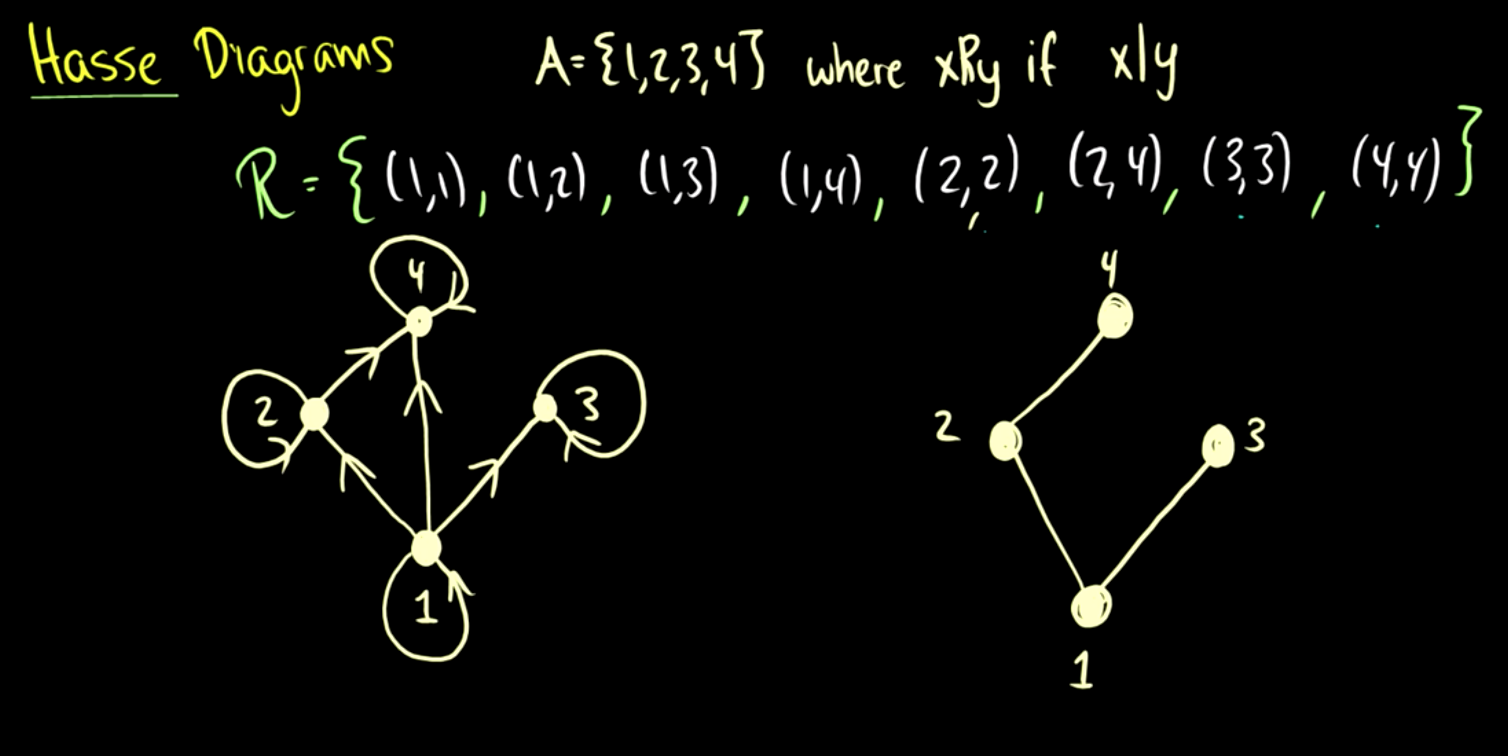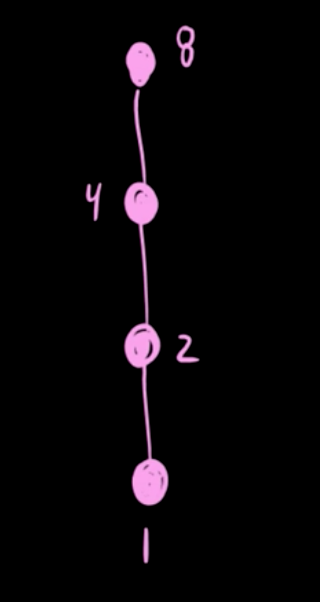Order and Covering relation
Tags: discrete math
Partial Order
A partial order on a set \(A\) is a relation that is
- Reflexive
- Antisymmetric
- Transitive
A set \(A\) together with a partial order \(\preceq\) on \(A\) is called a partially ordered set (or simply poset) and is denoted as \((A;\preceq)\).
e.g. \(A = \{1, 2, 3, 4\}\), where \(x\ R\ y\) if \(x\) divides \(y\)
\[R = \{(1,1),(1,2),(1,3),(1,4),(2,2),(2,4),(3,3),(4,4)\}\]Diagram can be draw as:

Comparable
For a poset \((A;\preceq)\), two elements \(a\) and \(b\) are called comparable if \(a \preceq b\) or \(b \preceq a\), otherwise they are called incomparable.
Totally ordered
if \(A = \{1, 2, 4, 8\}\), using the same relation
\[R = \{(1,1),(1,2),(1,4),(1,8),(2,2),(2,4),(2,8),(4,4),(4,8),(8,8)\}\]If any two elements of a poset \((A; \preceq)\) are comparable, then A is called totally ordered (or linearly ordered) by \(\preceq\).

Well ordered
Definition: A poset \((A;\preceq)\) is well-ordered if it is totally ordered and if every non-empty subset of A has a least element.
Cover
In a poset \((A;\preceq)\) an element \(b\) is said to cover an element a if \(a \prec b\) and there exists no \(c\) with \(a \prec c\) and \(c \prec b\) (i.e. between \(a\) and \(b\)).
Hasse Diagram
The Hass Diagram of a (finite) poset \((A;\preceq)\) is the directed graph whose vertices are labeled with elements of \(A\) and where there is an edge from \(a\) to \(b\) if and only if \(b\) covers \(a\).

if \(A = \{1,2,3,4,5,6,7,8\}\), the Hasse diagram is:

The covering relation is {(1,2),(1,3),(1,5),(1,7),(2,4),(2,6),(3,6),(4,8)}
https://www.youtube.com/watch?v=R36F8CWAi2k
https://math.stackexchange.com/questions/238675/constructing-a-hasse-diagram-using-the-covering-relation
Read more: